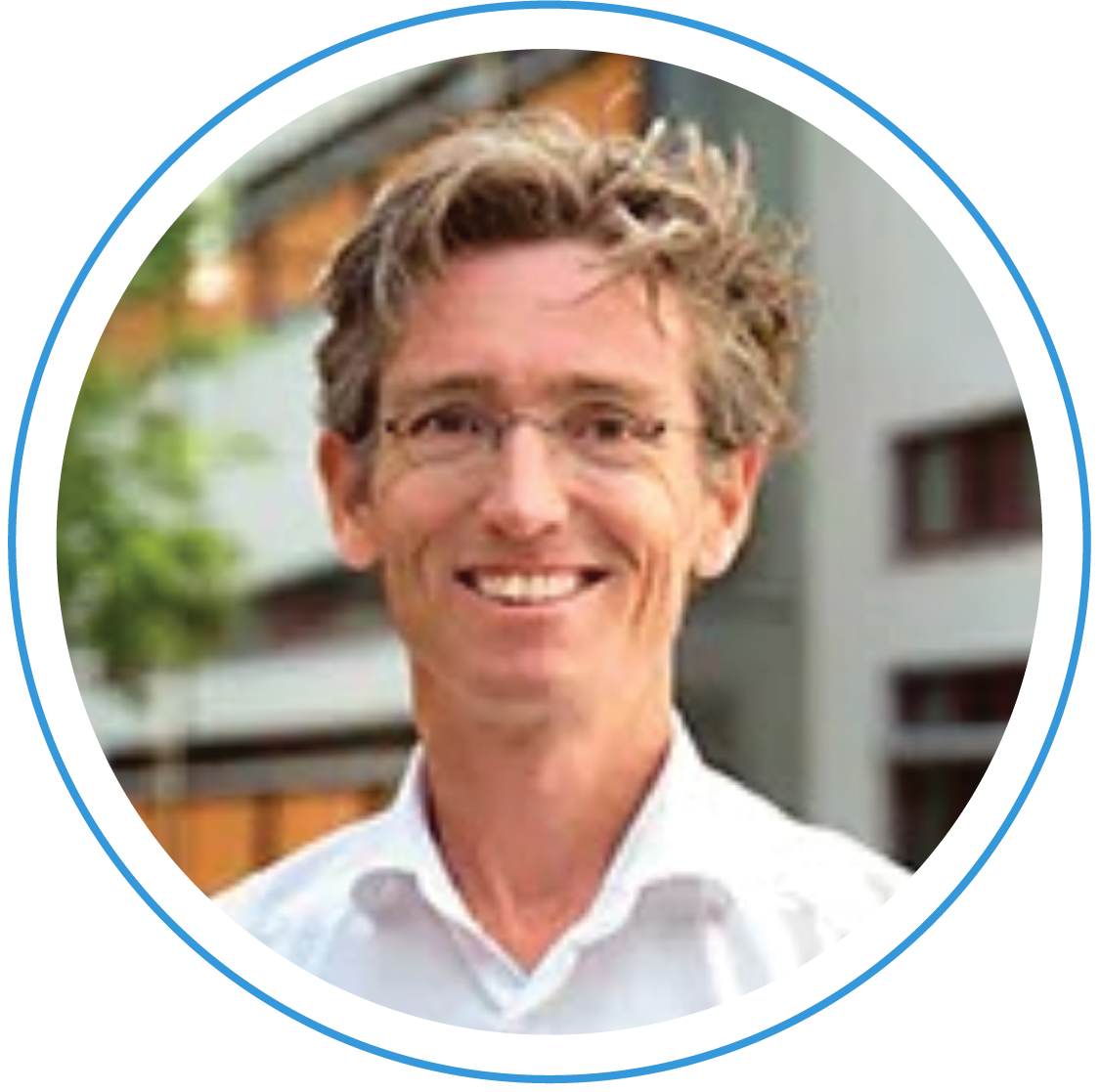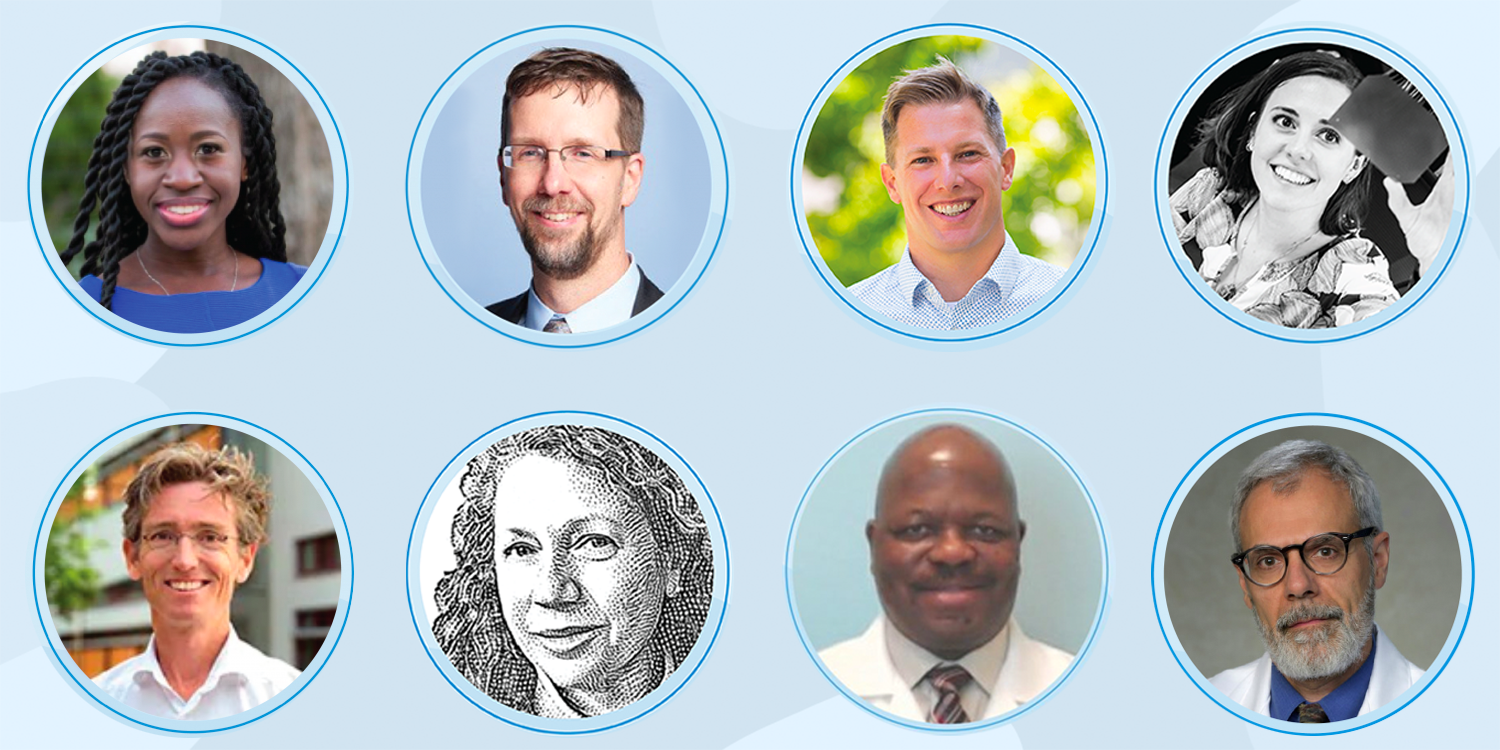The Focal Spot: Julianne Pollard-Larkin
In this edition of the Focal Spot, Tyler Blackwell interviews Julianne Pollard-Larkin, PhD.
In this edition of the Focal Spot, Tyler Blackwell interviews Bas Raaymakers, PhD.

“In developing the MR-linac, being totally ignorant was kind of an advantage, we were not hindered by worry. My partner may have been a little worried, but I didn’t care at all. Then it worked out and the technology grew rapidly, especially in the beginning.”
Bas:We were working in hyperthermia, the heating of tissue with RF radiation at frequency of 27 MHz. My supervisor and partner for the MR linac, Jan Lagendijk, became a professor around that time. He got the assignment to run the research on hyperthermia and radiotherapy physics as well. We had little legacy in radiotherapy, but we did have expertise on RF exposure calculations, and MRI was used heavily in hyperthermia treatment planning, so there was some link as far as MR goes.
During my PhD studies, we did some calculations for the mobile phone industry to assess adverse risks from RF radiation to the brain and eye. Doing these calculations, we basically earned enough money to seed the MR research, so that’s how we started. It was a seamless transition from my PhD to the MR linac research. It became a 20+ year journey.
Tyler:Did your partner have radiotherapy experience?
Bas:We had basic knowledge, but otherwise started from scratch. For hyperthermia treatment planning we used MR to try to quantify the perfusion, the dielectric properties, and temperature dependency of the physiological reactions, but we wanted to do more. We had a relationship with Elekta since we had their machines in our department, so we partnered with them to push things forward. In our hospital, the first MR scanner in the Netherlands for Philips had been introduced a few years earlier, so it was natural to team up with them and to discuss how we could make an MR linac a reality.
Tyler:Fast forward, what does your department look like now?
Bas:At this point we have 10 clinical CBCT linacs, two clinical MR linacs, and a prototype MR linac that’s essentially a museum piece—defunct, but there. We also have a 1.5T and 3T MR simulator, and a third MR linac, originally scheduled for installation in the fall, will arrive early next year. In the department, we are building a PET/MR and also a 7T MR with the footprint of a 3T that should be delivered later this year. This last one is home-built together with Philips. We even have a dedicated MR brachytherapy suite with a 1.5T scanner in a half meter concrete shielded room where we can do HDR while the patient is in the MR.
Tyler:It sounds like an MR-based radiotherapy center is the goal you’re working towards. Is that correct?
Bas:We are heading towards full MR-guided treatments. Once you see what you’re treating, there is no justifying going blind anymore. One big question is: will the MR linac be a novelty machine like Tomotherapy or CyberKnife where you just have one in the department? Or will it take over all treatments? We’re trying to show that the latter can be done.
Tyler:Adoption of MR linacs could be potentially hindered by the large cost associated with them, especially in an environment in which the price of radiotherapy is already high. Can you comment on that?
Bas:This is something we (have to) debate often and—spoiler alert—we claim we will make it cheaper in the end. The machine price is higher and there is a learning curve, so initially you will certainly treat fewer patients with the same number of personnel. It’s an investment to start. The gain has to come from unlocking the potential for further hypofractionation because of the live soft-tissue contrast imaging. As an example, for some prostate patients we are doing five fractions instead of a standard fractionation, so take that into account. If it takes us half an hour or 45 minutes, we can still do 500 patients a year, so easily we can break even or potentially make money, especially in the US. There’s a cost difference for sure, but the fact that you can decrease the fractions is a win.
Tyler:The European and Canadian model of care offers large departments with lots of capability, but the US has more widespread care. It’s not necessarily feasible to plug in an MR linac with the kind of staffing needed in a satellite clinic for a small town, right?
Bas:That’s why I’m enthusiastic about this dedicated prostate clinic we are trying to set up as a satellite. If we prove that it works by leveraging hypofractionation, then maybe with 500-1000 patients a year on a single Unity it becomes interesting. The area you can service if you have to travel for three fractions instead of 35 becomes much larger. We are talking about becoming a focal clinic at that point. This might be more compatible with the US market, but right now the machines are marketed as general purpose, like CBCT linacs, which is indeed not as compatible in the US system.
Tyler:You’ve been working with adaptive therapy in conjunction with MR linacs, which is another staff intensive process. Do you think we will see more of it? Where do you see this going in the next decade?
Bas:Inevitably, we’ll see more. Varian is doing it with Ethos and with the MR it’s more extreme. You can see a prostate sagging a few millimeters, you can see lung motion, irregular breathing, etc. We know these things are there, but seeing it hurts! PTV margins are typically created based on population, but standard margins might not be required for Mr. X or Mrs. X, and you can see it. When you’re in charge of pushing the buttons, the pressure to adapt is huge, so I think it’s inevitable.
Tyler:How do you think roles of physicists or dosimetrists might change?
Bas:We don’t have treatment planners like the US, but in the adaptive game, the whole radiotherapy process would be condensed to the time when the patient is on the treatment table. The patient specific treatment plan on a daily basis will need to be automated.
For physicists, QA is the Achilles heel. How do you check if treatment is going well? You cannot have a plan, check it on a phantom, and sign off like you would with a typical workflow. Online QA has been a part of our research for this reason. How do you get enough confidence that you can produce a new treatment plan everyday for each procedure? And then, how do you do that if you are going to adapt the plan on an intra-fraction basis, in real-time? Lots of good things to think about and work on…
Tyler:Living in the Netherlands, you have enviable options for vacationing and holidays. Where is your favorite place to vacation or do you like to mix it up?
Bas:It’s camping for us. As basic as possible, in a tent. As fair-weather campers, we “demand” good weather, so automatically that filters the options a lot. It is France, Italy, Spain, preferably the sea or the mountains, but we will see this year…
Tyler:Yes, 2020 will keep us guessing! What hobbies outside of medical physics do you pursue?
Bas:I do field hockey and I do some running. I have a guitar. I won’t say I play it, but I have one. I read quite a lot, and I combine that with traveling, especially when traveling alone with hours to kill. On the way there you can prepare the presentation—because that never happens on time— but when alone, there is always plenty of time to read.
Tyler:This might be tough because you’ve done so much, but what’s a personal accomplishment that you’re most proud of?
Bas:My kids.
Tyler:Do you have a favorite music or band?
Bas:The Ramones, I have a sweet spot for them. During my studies I listened to the Red Hot Chili Peppers and Nirvana. I have gotten into Soul music as well, like Aretha Franklin.
Tyler:Is there something that you think is true, but others disagree with you?
Bas:It’s hard to say for all others, but there is so much randomness and coincidence in how our lives ultimately end up. And I feel many people often claim success as their own accomplishments, whereas I say I’m lucky!
Tyler:What is your superpower, what is special about you?
Bas:Not much. I think I’m modest, I don’t know if that’s a skill, but I do have patience though and I’m persistent. I can wait.
Tyler:I think in today’s world that qualifies as a superpower.


Tyler is a board-certified medical physicist with extensive clinical experience in radiation therapy. He is active in the medphys community including several AAPM committees, the AAPM Board of Directors, and as an ABR orals examiner. Tyler dabbles in real estate investing, loves preparing breakfast for his three kiddos, and enjoys playing adult coed soccer.
Related tags: RadOnc News The Focal Spot
In this edition of the Focal Spot, Tyler Blackwell interviews Julianne Pollard-Larkin, PhD.
In this edition of The Focal Spot, Tyler Blackwell interviews UCSD physicist Todd Atwood, PhD.
In this edition of The Focal Spot, Tyler Blackwell interviews Eric Ford, PhD, FAAPM.
Leave a comment